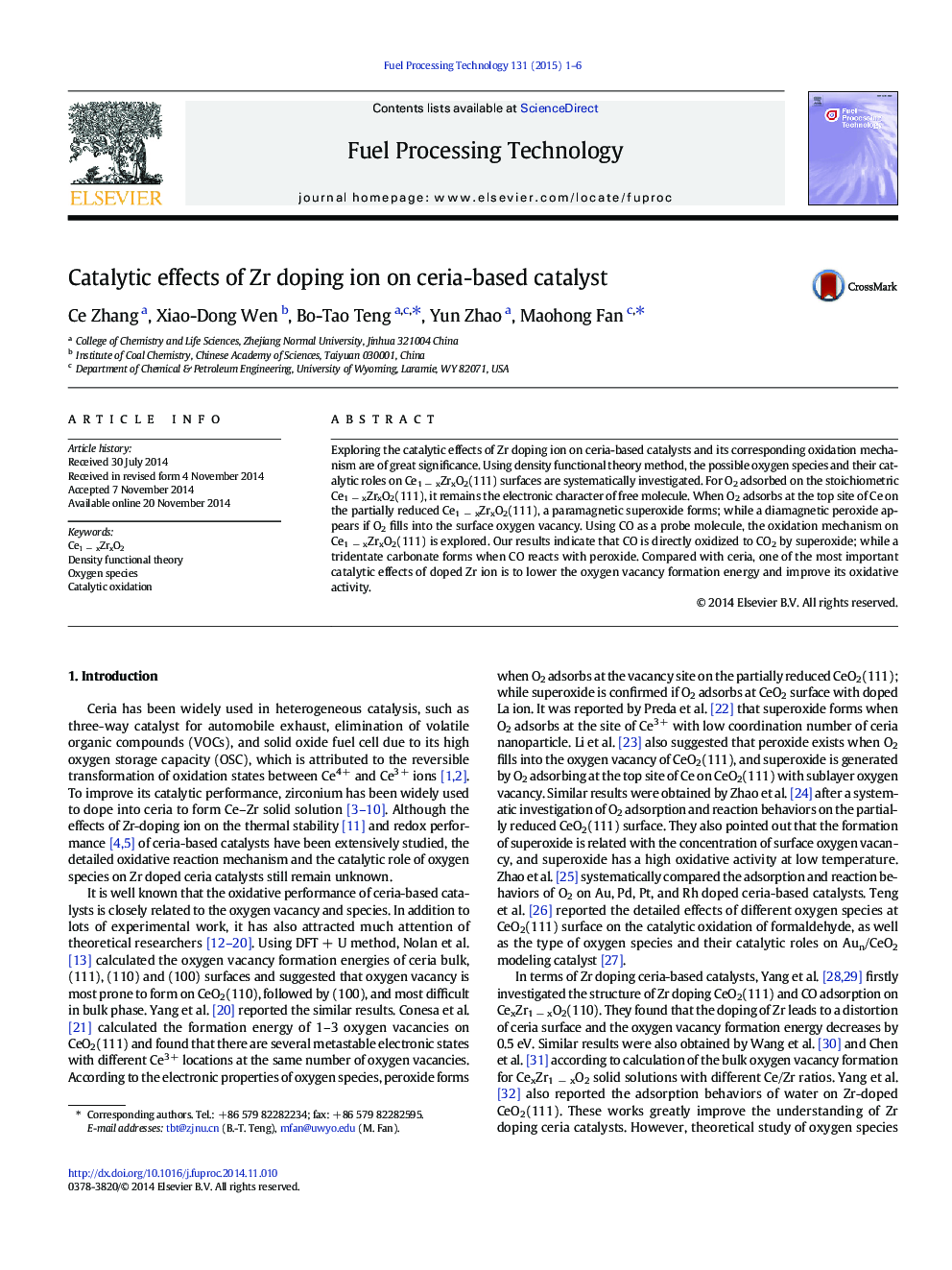| Article ID | Journal | Published Year | Pages | File Type |
|---|---|---|---|---|
| 209333 | Fuel Processing Technology | 2015 | 6 Pages |
•Electronic formation mechanism of oxygen species is well interpreted.•CO is directly oxidized by superoxide.•A tridentate carbonate forms when CO reacts with peroxide.•Catalytic effects of doped Zr ions in ceria-based catalysts are elucidated.
Exploring the catalytic effects of Zr doping ion on ceria-based catalysts and its corresponding oxidation mechanism are of great significance. Using density functional theory method, the possible oxygen species and their catalytic roles on Ce1 − xZrxO2(111) surfaces are systematically investigated. For O2 adsorbed on the stoichiometric Ce1 − xZrxO2(111), it remains the electronic character of free molecule. When O2 adsorbs at the top site of Ce on the partially reduced Ce1 − xZrxO2(111), a paramagnetic superoxide forms; while a diamagnetic peroxide appears if O2 fills into the surface oxygen vacancy. Using CO as a probe molecule, the oxidation mechanism on Ce1 − xZrxO2(111) is explored. Our results indicate that CO is directly oxidized to CO2 by superoxide; while a tridentate carbonate forms when CO reacts with peroxide. Compared with ceria, one of the most important catalytic effects of doped Zr ion is to lower the oxygen vacancy formation energy and improve its oxidative activity.
Graphical abstractElectronic formation mechanism of O2− and O22− on the partially reduced Ce1 − xZrxO2(111).Figure optionsDownload full-size imageDownload as PowerPoint slide
